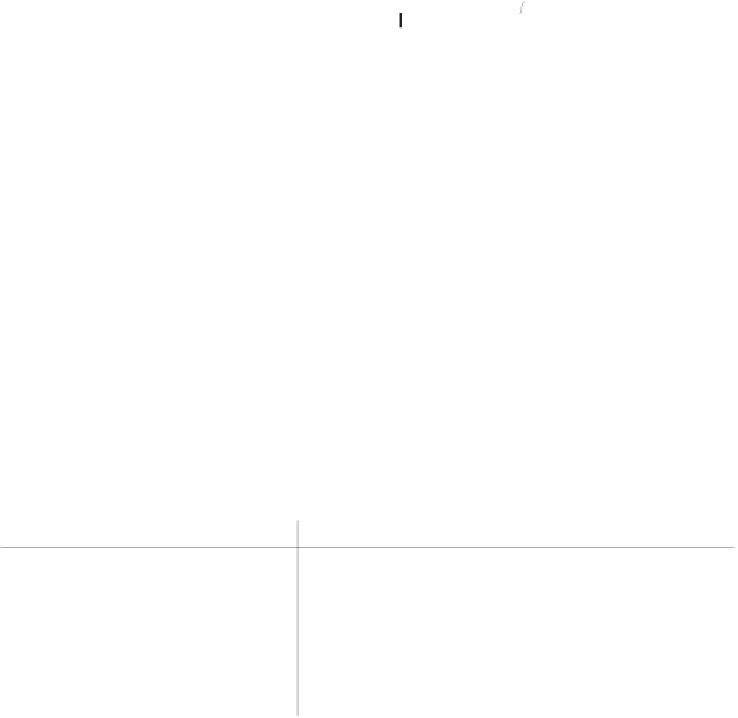Global Positioning System Reference
In-Depth Information
2
Q
=
≅
222
.
(6.20)
R
c
(
)
−
∫
2
sinc
π
fT
df
c
R
c
When the modulation is BOC(
m, n
) and the interference spectrum is centered
on one or both of the subcarrier frequencies so that
f
1.023 MHz,
Q
is
slightly more than twice the value of the corresponding
Q
for a BPSK-R(
n
) modula-
tion. In particular, when
=±
m
×
2
R
c
so that the interference covers one or both
null-to-null main lobes of the signal spectrum,
Q
takes on values in the range 4.6
β
ι
=
≤
Q
5.5, depending on the subcarrier frequency, the spreading code rate, and
whether cosine phasing or sine phasing is used.
Table 6.3 summarizes these
Q
s for C/A code, P(Y) code, and M code, along
with their associated modulation types and spreading code rates for the three classes
of jammer types analyzed earlier.
≤
Computing J/S and Tolerable Jamming Power
When expressed in units of dB-Hz, (6.8) becomes
(
)
∆
(
)
CN
=
10
log
CN
S
0
10
S
0
eff
,
dB
eff
(
)
C
C
(6.21)
ι
s
dB
(
)
CN
S
0
10
dB
10
−
=−
10
log
10
+
10
10
QR
c
where:
(
C
S
/
N
0
)
dB
=
10log
10
(
C
S
/
N
0
) (dB-Hz)
(
C
ι
/
C
s
)
dB
=
10log
10
(
C
ι
/
C
s
) (dB)
R
c
=
1.023 Mchip/s for L1 C/A code and L2C
=
5.115 Mchip/s for M code
=
10.23 Mchip/s for P(Y) code and L5 code
Equation (6.21) shows that the effect of jamming is to reduce the unjammed
(
C
S
/
N
0
)
dB
in a receiver to a lower value, (
C
S
/
N
0
)
eff, dB
. As shown in Chapter 5, signal
Table 6.3
Summary of Jamming Resistance Quality Factors (
Q
)
Signal/Jammer Type
Q (Dimensionless)
PRN code
Spreading code rate
Modulation type
C/A Code
R
c
=
P(Y) Code
R
c
=
M Code
R
c
=
1.023 MHz
BPSK-R(1)
10.23 MHz
BPSK-R(10)
5.115 MHz
BOC
s
(10,5)
Bandlimited white noise null to null
2.22
2.22
5.3
Matched spectrum
1.5
1.5
4.0
Narrowband at spectral peak(s)
1
1
2.3












Search WWH ::

Custom Search